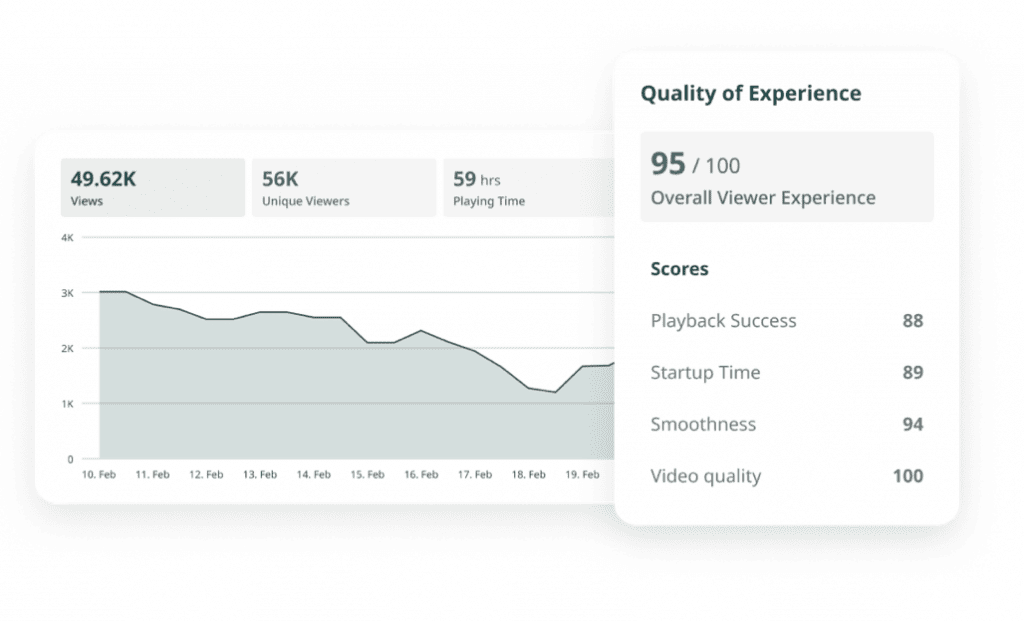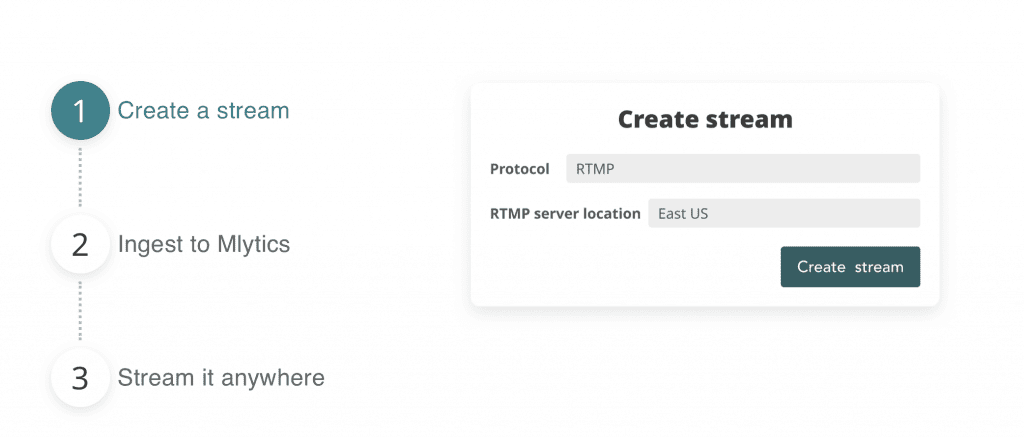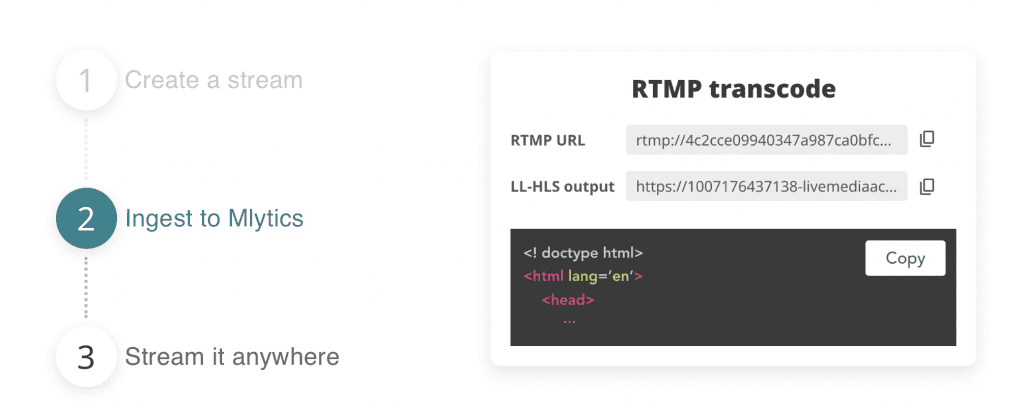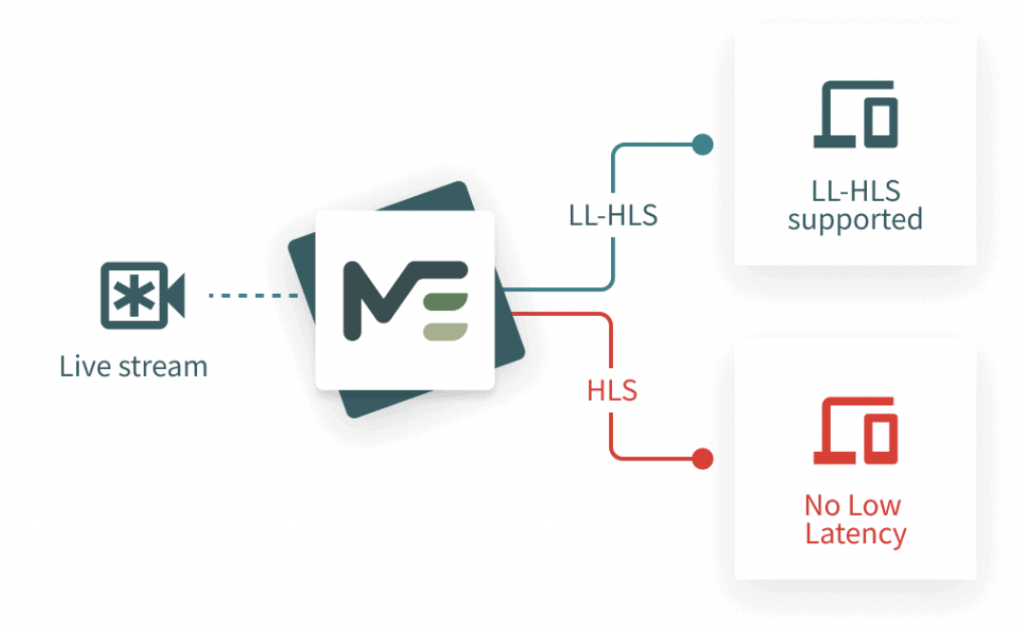This post is also available in: 简体中文
Low latency has become increasingly important in today’s digital world. Video streaming has transformed how we learn, entertain ourselves, and stay informed about the world. From online gaming to education, live streaming has revolutionized how we consume information. But as demand for video streaming services grows, a new problem arises. Latency refers to the time delay between the live event and when it’s delivered to the viewer. Low latency is especially important for real-time communication events like gaming tournaments or sports events.
Importance of Low Latency
Low latency is very important for video streaming because it directly affects the audience’s viewing experience. Latency refers to the time delay between when a video is captured and when it is displayed on the viewer’s screen. The longer the latency, the greater the delay between the live event and what the viewer sees. This delay can range from a few seconds to several minutes, resulting in an inferior viewing experience.

Low latency is also important for live events such as online gaming, video conferencing, etc. Because it ensures that the viewers are receiving the content in near real-time, when there is a delay in the video stream, it can cause a lot of issues, such as
1– Loss of Engagement: A significant delay between the live event and when it’s delivered to the viewer can cause them to lose interest in the event.
2- Negative User Experience: If the latency is high, the video may freeze or buffering, which can be frustrating for the viewer and can lead to a negative user experience.
3- Missed Opportunities: High latency can cause the viewer to miss out on important moments of the live event, like a goal scored in a football game.
4- Communication Issues: In live events like gaming tournaments, low latency is crucial because it ensures that the players can communicate with each other in real-time, which is necessary for their gameplay.

Mlytics Video Stream shows audience analytics that provides detailed viewer engagement and behavioral insights. This helps creators and businesses make informed decisions about improving their content and services.
Mlytics Video Stream – Less than 2 Seconds of Latency
Mlytics Video Stream is a platform that allows users to create live streaming with less than two seconds of latency. It uses a combination of technologies, including RTMP broadcasting and LL-HLS transmuting, to deliver video quickly and efficiently. One of the key advantages of Mlytics Video Stream is its ease of use. Users can go live in just 5 minutes with a simple setup and configuration.


Another advantage of Mlytics Video Stream is its backward support. This means that it is compatible with a wide range of devices and platforms, making it easy for viewers to access the content from anywhere, on any device.

Low Latency Video Streaming Protocols
Here are some of the key features of Mlytics Low Latency Video Streaming Protocols:
LL-HLS Support: Mlytics Video Stream supports the innovative LL-HLS protocol, which reduces video latency and improves user engagement. By delivering video chunks in smaller sizes, LL-HLS ensures that content is delivered to the viewer more quickly, resulting in a seamless and engaging streaming experience.
RTMP Broadcasting: Mlytics Video Stream provides RTMP broadcasting, which is widely used in the streaming industry for low-latency streaming of live events and interactive applications. With RTMP broadcasting support, content creators can deliver high-quality video content with minimal latency.
WebRTC Support: Mlytics Video Stream supports WebRTC, a peer-to-peer protocol that enables real-time video streaming with minimal latency. This protocol is particularly useful for interactive applications and live events, where real-time communication and low latency are essential.
Real-Time Analytics: Mlytics Video Stream provides real-time analytics, allowing content creators and businesses to monitor their traffic and gain insights into viewer engagement and behavior. This can help businesses make informed decisions about their content and services, leading to increased engagement and revenue.
Simple Setup and Configuration: Mlytics Video Stream is easy to use, with simple setup and configuration. This makes it an ideal choice for businesses and content creators who want to get up and running quickly and efficiently.
LL-HLS, WebRTC, FLV comparison
There are several protocols available for low-latency video streaming, including LL-HLS, WebRTC, and FLV. LL-HLS is a new protocol designed to reduce video latency and improve user engagement. LL-HLS works by delivering video chunks in smaller sizes, allowing them to be delivered to the viewer more quickly. WebRTC is another protocol that has gained popularity in recent years. WebRTC uses a peer-to-peer connection, enabling real-time video streaming with minimal latency. But, FLV is an older protocol that is still used in some cases.
| Features | LL-HLS | FLV | WebRTC |
|---|---|---|---|
| Relatively low-latency compared to traditional HLS | ✓ | ✓ | ✓ |
| Adaptive bitrate streaming | ✓ | ✓ | ✓ |
| High scalability, especially for large-scale streaming events | ✓ | ✓ | |
| Supports encrypted connections for enhanced security | ✓ | ✓ | |
| Compatible with Apple devices and most modern web browsers | ✓ | ||
| Works well with content delivery networks (CDNs) for scalability | ✓ |
LL-HLS is a newer protocol designed explicitly for low latency streaming and offers several advantages over other protocols. WebRTC is another popular protocol that is used for real-time communication and streaming. When comparing these protocols, LL-HLS is generally considered to be the best option for low-latency video streaming.
Low Latency Streaming OBS Studio
Low latency streaming with OBS Studio (Open Broadcaster Software) reduces video latency and improves user engagement. OBS Studio is a popular live-streaming software that is used by many gamers and content creators. It allows users to stream their gameplay to Twitch, YouTube, and Facebook platforms. Optimizing the settings is important to achieve low latency streaming with OBS Studio, it is necessary to adjust the bitrate, resolution, and frame rate to reduce latency.
Mlytics Video Stream Low Latency is an excellent choice for achieving low-latency streaming. With its easy-to-use interface, backward compatibility, and support for multiple protocols, Mlytics Video Stream Low Latency can help you deliver high-quality, low-latency video streaming to your audience.
Lowest Latency Game Streaming

For online gamers, achieving the lowest possible latency is essential. Even a small delay can affect gameplay and lead to a frustrating experience. Mlytics provides real-time CDN analytics and performance monitoring service that can be used to optimize game streaming for the lowest latency. It provides a variety of features that can help improve the streaming experience for viewers and players alike:
Real-time analytics: Mlytics provides real-time data on network and server performance, including latency, bandwidth usage, and packet loss. This information can be used to quickly identify and troubleshoot issues that may be impacting stream quality.
Global CDN: Mlytics operates a global content delivery network (CDN) that ensures low latency and high-quality streams across a wide range of devices and locations. The CDN uses a variety of techniques to minimize latency, such as caching content closer to end users and using optimized routing protocols.
Smart load balancing: Mlytics uses smart load balancing techniques to distribute traffic across multiple servers and data centers, ensuring that streams are always delivered from the fastest and most reliable source.
DDoS protection: Mlytics provides built-in protection against DDoS attacks, which can cause stream interruptions and impact performance. This protection helps to ensure that video streams remain stable and uninterrupted.
Low Latency CDN Providers
Mlytics is a top-tier low latency CDN provider offering a range of advanced features to ensure viewers have a seamless and engaging video streaming experience. Mlytics Low Latency CDN is designed to provide fast, reliable, and scalable content delivery, ensuring that content creators and businesses can deliver high-quality video content to their audiences without any lag or delays. If you’re looking to expand your business’s video streaming capabilities, Mlytics has a range of CDN plans available to suit your needs. With the right plan, you can ensure your content is delivered seamlessly and reliably to your audience, no matter where they are in the world. Take advantage of Mlytics’s expertise and find the perfect plan to help you grow your business today.
Some of the other low-latency CDN providers include Cloudflare, Amazon CloudFront, and Akamai. These providers use advanced technologies to ensure that the video is delivered to the viewer as quickly as possible, with minimal latency.



